Tropea: If “Italy’s Most Beautiful Village” is good enough for Hercules, it’s good enough for me
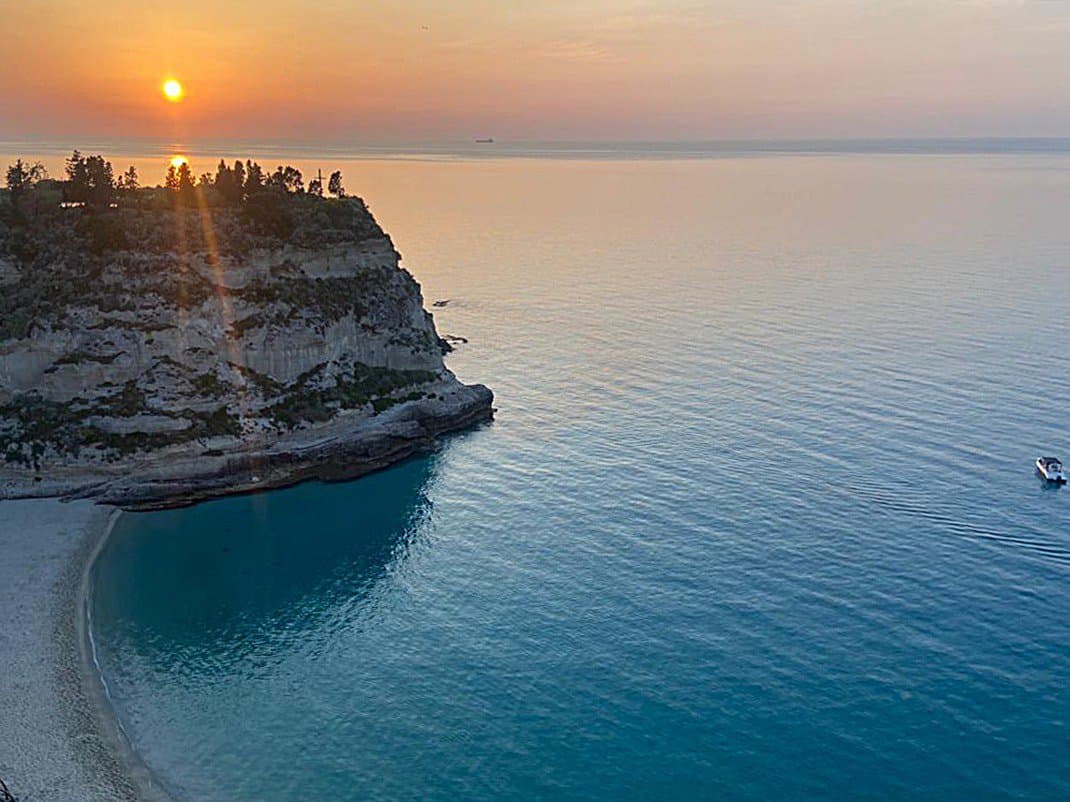
TROPEA, Italy – I can’t admire Greek myths. Zeus was a jerk. Yeah, he was the god of gods but he ate his wife whole before she gave birth to a son he thought would overthrow him. Get a grip, Z. Artemis, the goddess of the hunt, once transformed a hunter into a deer after he saw her naked and was devoured by his own dogs. And have you ever had an Internet date worse than Medusa?
But one product of Greek mythology I can really relate to. He has my tastes, my sense of style, my love for beauty.
Hercules.
It sure as hell has nothing to do with what I do in the gym. What impressed me was where he kicked back after he performed the Pillars of Hercules. Let’s see. Among his 12 tasks was strangle to death a man-eating lion terrorizing a village; slay Hydra, the nine-headed poisonous snake; capture the rampaging bull who knocked up the local king’s wife; and kidnapped Cerberus, the vicious three-headed dog guarding the gates of Hades. Then where did Hercules go to rest?
Tropea, “Italy’s Most Beautiful Village.”

Why Tropea?
So did I. For a week. Actually, I only had one challenging task and it wasn’t quite as arduous as slaying rabid monsters. I’m writing a book.
Next year will mark 10 years in Rome and I’m writing the views of the city through the cynical eyes of a veteran travel writer after a decade of experiences. Writing a book is the male equivalent of giving birth. Over nine months it’s almost as painful. I came to Tropea for a picturesque change of scenery from the writing desk of my living room.
Why Tropea? Its region of Calabria is one of two of Italy’s 20 regions I hadn’t visited. (Val d’Aosta is next.) The toe of Italy’s boot is considered the poorest, most rural and least industrial region in the country. But it is also famous for beautiful beaches, unspoiled culture and friendly people fiercely proud of their little corner of Europe.
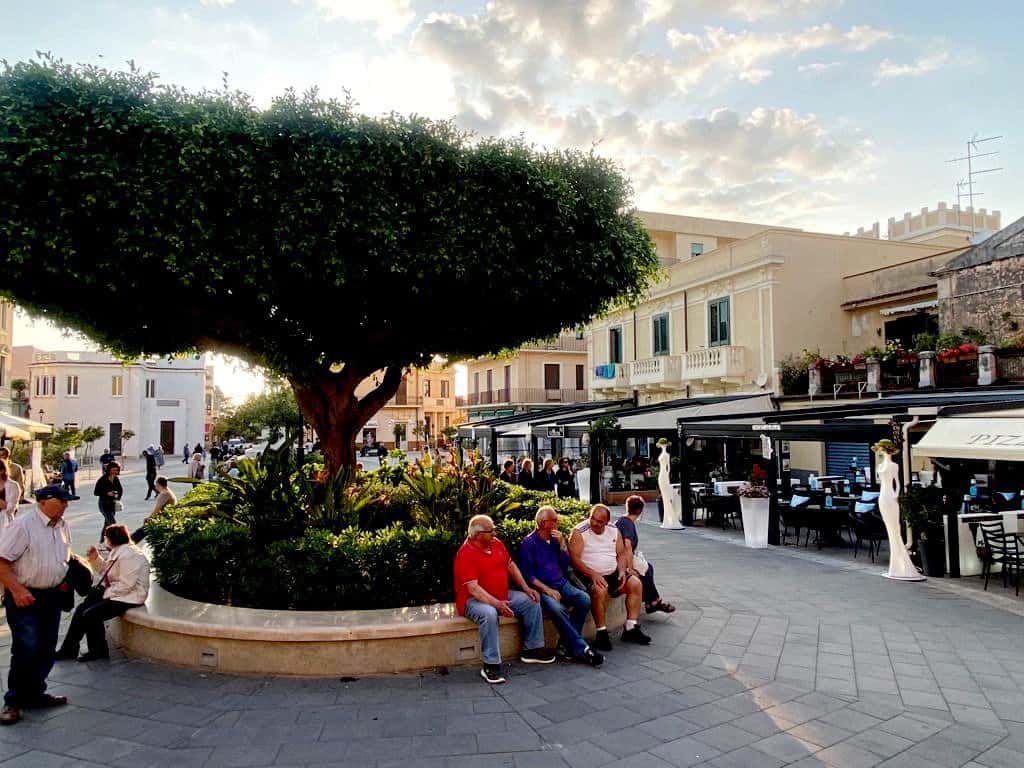
Marina hates Calabria. She says she saw too many abandoned animals when she last visited. It was the perfect place to come alone. The last week in May was the perfect time to come. In June, the crowds double and so do the prices and temperature.
It’s easy to reach. It’s 380 miles (630 kilometers) south of Rome, and the train goes along the Tyrrhenian coastline. The sea became clearer the farther south I went interspersed with quaint villages to my right and sprawling green hills to my left. With one connection, I reached Tropea in 5 ½ hours.
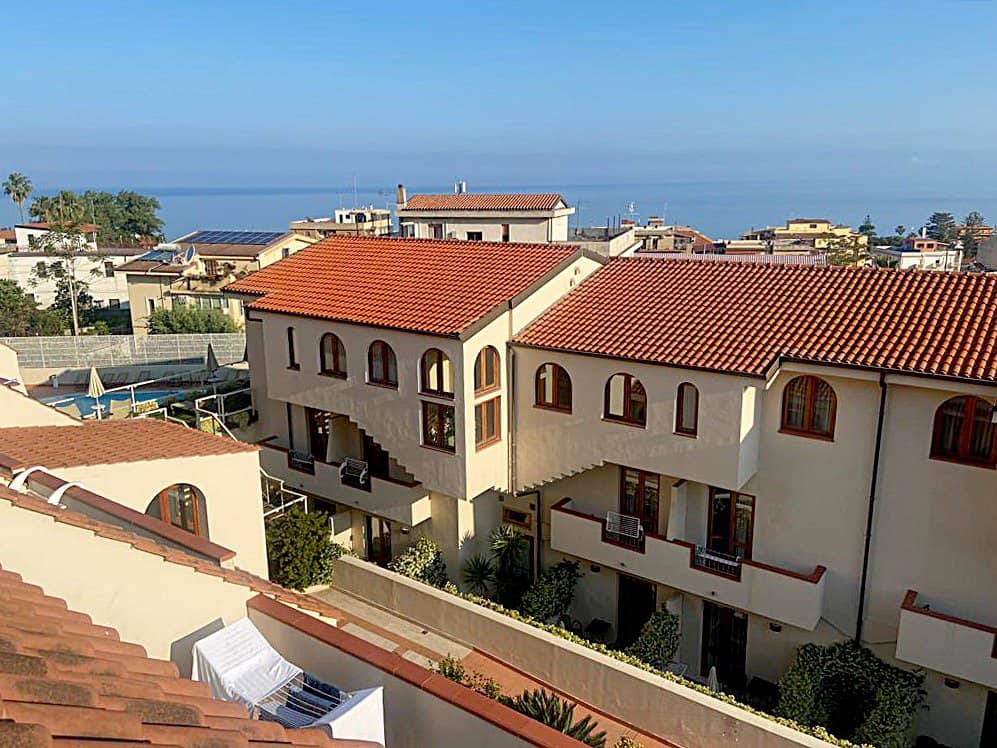
I stayed at the Hotel Tropis, a four-star spa-hotel at the top of the town a five-minute walk from the train station. It featured a swimming pool, Jacuzzi, massage rooms and full buffet breakfast. They gave me a room with a seaview and balcony, perfect for writing, because I asked nicely.
I love this country.
Tropea town
Tropea spreads out along the top of a cliff lined with beaches and anchored by a beautiful marina. The cliff overhangs the sea like one giant penthouse apartment. No hotel sits directly on the beach.
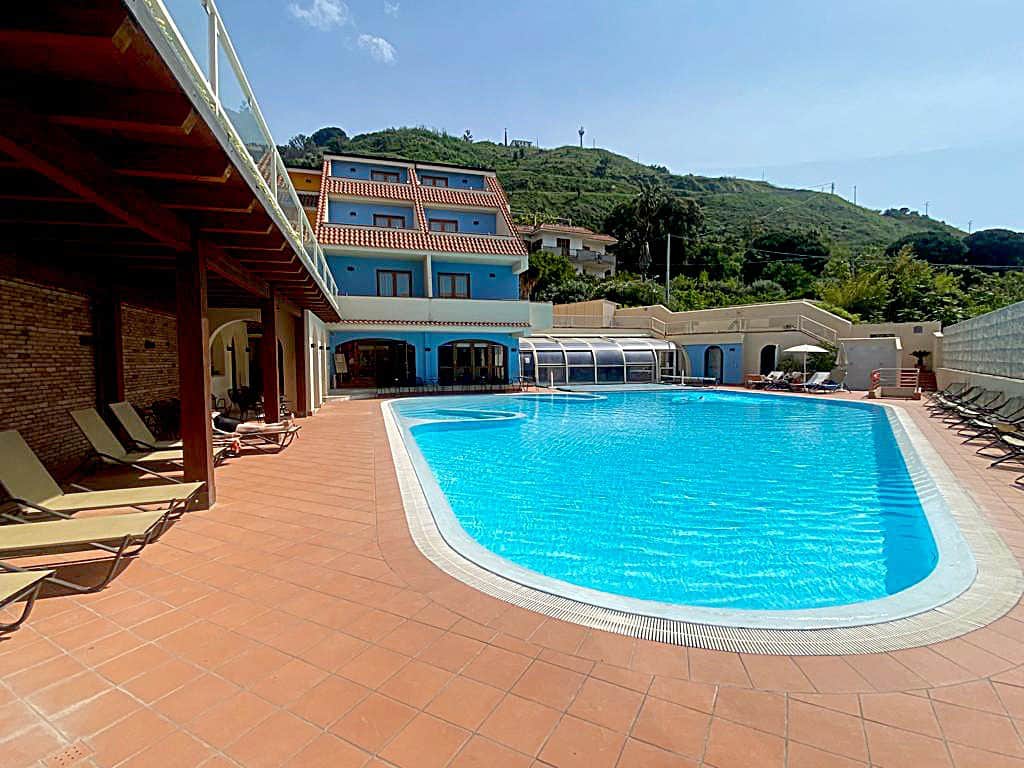
From my hotel, I strolled down the main drag of Corso Vittorio Emanuele III and realized Tropea really is the pearl of Calabria. Any signs of Calabria’s backward poverty are a world away. I walked past piazzas with chock-a-block outdoor bars. All the way down the street I passed gelaterias, trattorias, souvenir stands and one enoteca selling Calabria’s underrated white Ciro’ wine.
It emptied out into Largo Migliarese where I took a seat at Dal Barone, a cocktail bar with tables all pointing out to the sea. I ordered a glass of Ciro’ Bianco and joined well-dressed couples staring at the horizon through their designer sunglasses. They were all looking at the space between two bars, a lookout where a small crowd had gathered.
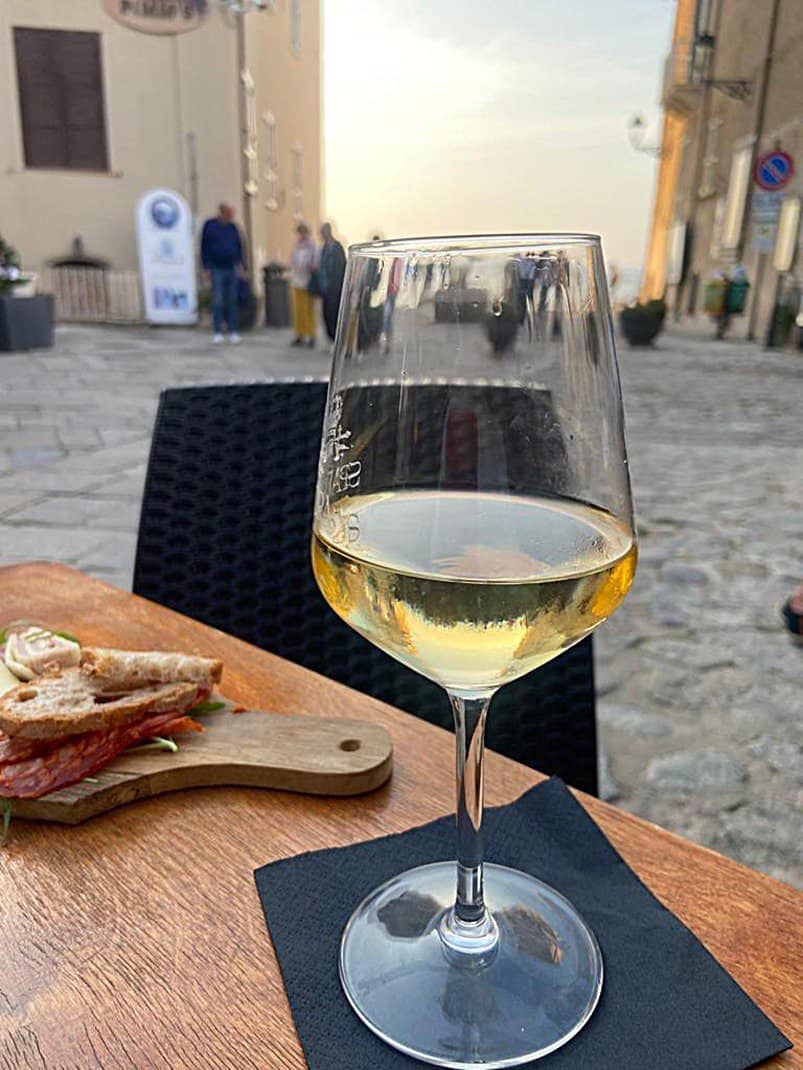
It was about 7:30 p.m. The sun set about 8:15. I put a coaster over my glass to investigate. Laying before me was the next blown-up photo on my wall. The sun was a little orange fireball hanging over what looked like a small island with a sand-colored church covered in gables atop it. A small motorboat slowly floated into view. In the foreground, stretching along a gentle arc, was a sandy beach.
I could see why Tropea topped Borgho dei Borghi’s list of “Italy’s Most Beautiful Village 2021.”
The church is Santa Maria dell’Isola, a medieval monastic church dating back to the 7th century. According to legend, it was first inhabited by hermits and their ascetic lifestyle carried over into the 11th century when it became a monastery. At one time, this rock was its own island. However, through the centuries the accumulation of silt formed a causeway and connected the island to the mainland.
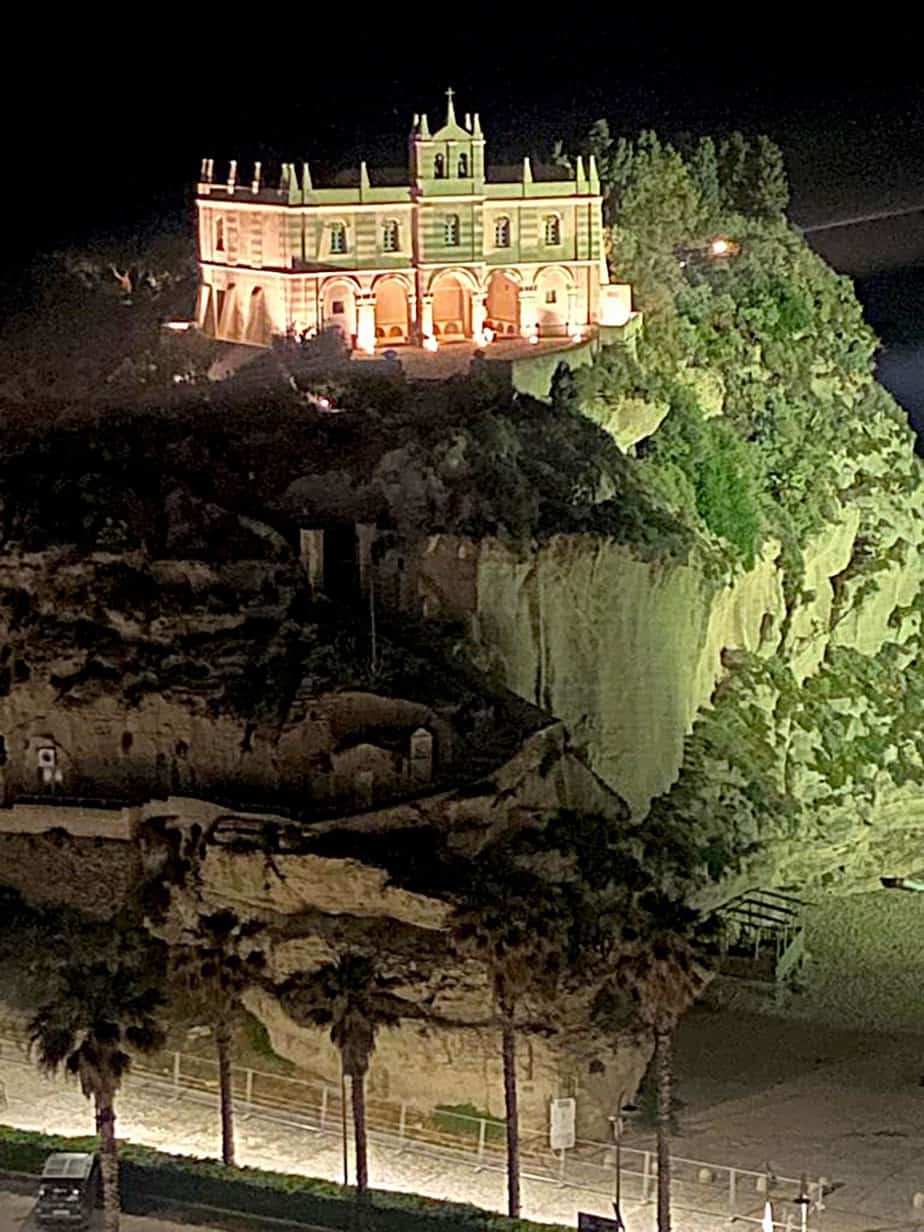
To reach it, I went to Largo Villetta high above the sea where people gathered at Bar dell’Isola and overdressed waiters served pastel-colored cocktails in tall glasses at tables with red tablecloths. The church hovered in the distance almost at eye level, looking like a sand castle on a rock.
I walked down 109 steps to the sea below, crossed the causeway and walked up 89 steps to the church. Even in relatively mild 75 degrees I sweated. I can’t imagine how few people make it in July when every day is in the high 80s. The outside of the church is much more impressive than the inside. It has only 13 rows of pews although soft Gregorian chants over the loudspeaker was a nice touch.

Back in Largo Migliarese, I took a glass of wine at Carbone Cocktail Bar where pulsating rock music splashed the place with a young vibe. I started chatting with two young local men in their early 20s. Severio Ruffa was an administrator who was born and raised in Tropea. I told him the people in Tropea don’t match Calabria’s reputation for being poor and downtrodden.
“It’s the mentality here,” he said. “You take a passeggiata (stroll). Go to the beach. See the sunset. Everyone’s cool.”
You don’t need to be in the sea to be cool here. On the way back to the hotel, I stopped at Emotion Bar, another outdoor cafe on a piazza. Two singers with salt and pepper hair sang ‘90s Italian pop hits while I sipped a glass of red Magliocco wine. I was the only person at a table alone.
I thought of Marina. Why wasn’t she here? I hadn’t seen a single abandoned animal.
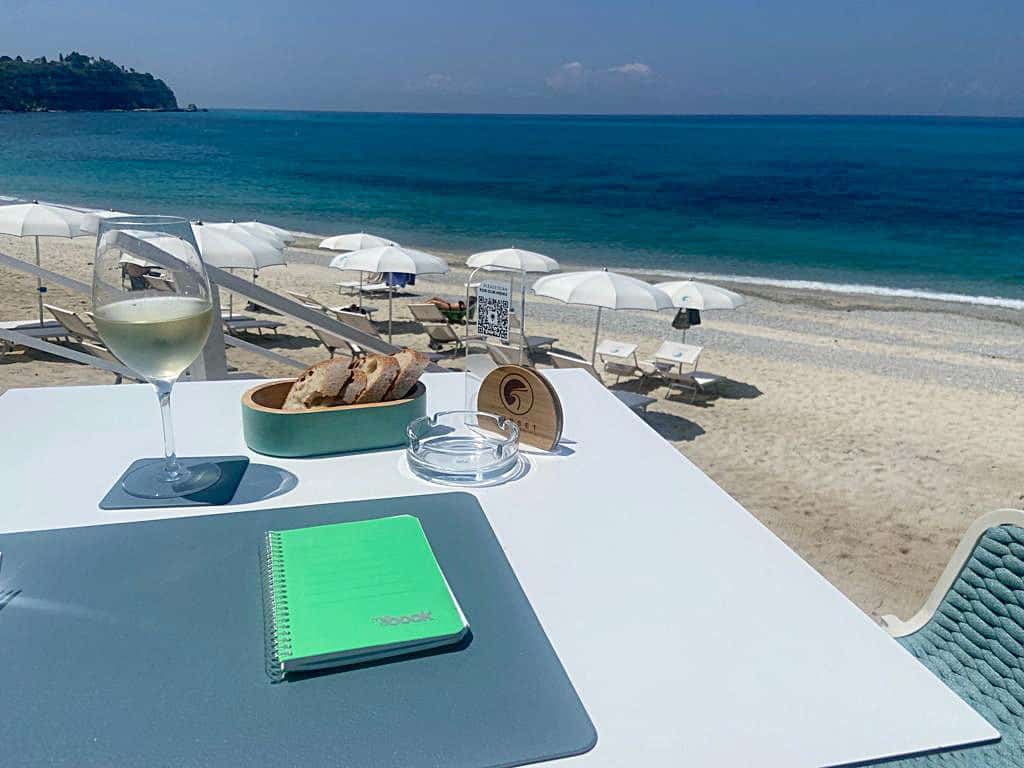
The beaches
Tropea sticks out on a peninsula protruding into the Tyrrhenian Sea like a bump atop the toe of Italy’s boot. A string of golden sand stretches the length of town for miles. Only 60 miles (100 kilometers) to the south is Sicily. Weather in Tropea is mild nearly all year except for two summer months when the 7o-percent humidity is more appropriate for African violets than human life.
On a perfect 72-degree day under clear, sunny skies, I took the hotel’s shuttle 10 minutes to its private beach. Spiaggia Rocca Nettuno is a long stretch of sand with three widely spaced restaurants. A beach chair and umbrella were included in the shuttle. The blue-green water, as still as a lake, was free.
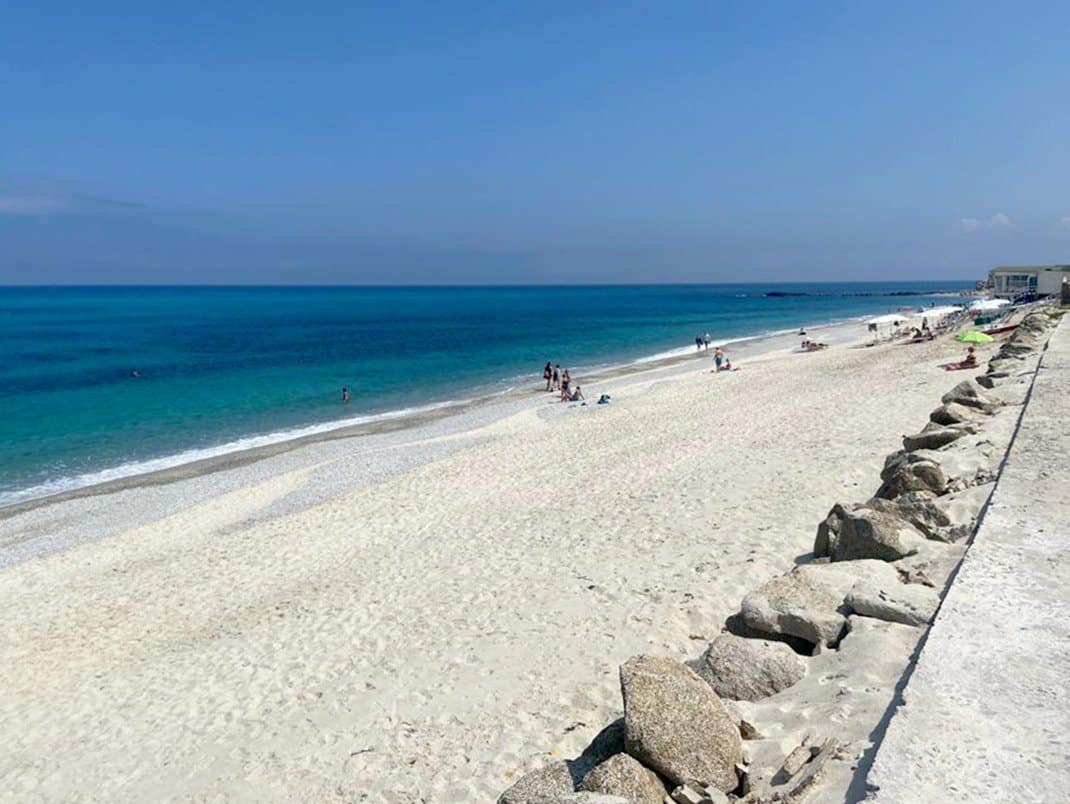
The water this far south in Italy is clean enough for scuba diving. I looked farther out to sea and the water had turned the turquoise similar to what I saw in French Polynesia. The only difference is I had to precariously maneuver across a strip of jagged rocks to the water where the temperature of 69 degrees takes somewhat of a hearty soul.
Few people were at the beach. A waiter at the Sunset Beach club, where I had a superb tuna salad, said the place will be jowl to jowl by late June. The waiter was one of many I met who had moved to Tropea. He tired of his job as a chemical engineer in Luxembourg and decided he’d rather be a waiter on a beach.
He gave me a glass of wine, looked up at the sun, traced the sky with his arm and said, “I’m always on vacation.”

Walking past the sanctity of my private beach, with “TROPIS” emblazoned on the lounge chairs, I heard very few foreign voices on the public beach. Before summer, Tropea is still an Italian destination. I saw few children. May in Tropea is the perfect time for ocean bliss.
The Italian entrepreneur
Tropea is not a party town. Nightlife revolves around the outdoor cafes where tall cocktails and glasses of wine fly around tables until after midnight. Being alone, I gravitated to Hosteria Italiana. Its outdoor seating is anchored by a huge screen where they showed Italian soccer games at night.
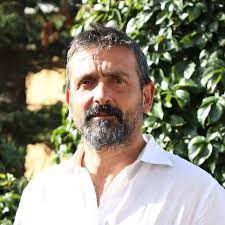
One night I met the 76-year-old owner, Nino Carbone. Tall, wiry with long, shocking white hair that gave hints of a hippy past, he moved to Tropea from outside Reggio Calabria, the regional capital, 40 years ago. He is one of Tropea’s leading entrepreneurs. He not only owns Hosteria Italian, but the restaurant, Nino e Marcella (named for his late wife) and Carbone Cocktail Bar Gelateria which became my nightly drinking well.
He said he never suffered much during the Covid lockdown which Tropea survived much better than most. He cited Tropea mayor Giovanni Macri. Elected in 2018, Macri helped get them to the Borgo dei Borghi award and also the Blue Flag recognition for clean beaches three straight years.
In a 2021 interview with Italiani.it website, Macri said he managed to lure tourists in during the times when Tropea had no lockdown.
“The restaurants in Tropea have hardly been affected by Covid because even if the season has shrunk, in that part, the numbers have been incredible,” Macri said. “Those who really lost were the hoteliers. It was therefore a year of internal production.”
Wrote Beppe, Nino’s son in an email about Macri: “He intervened in everything. Traffic, services, lighting through the city. Televisions and newspapers from all over the world talk about Tropea for its beauty!”
Nino said Calabria’s reputation as having friendly people is a product of their economics.
“Calabria isn’t rich,” he said. “We need to communicate with other people for work. We need hospitality. In the South we have more heart.”
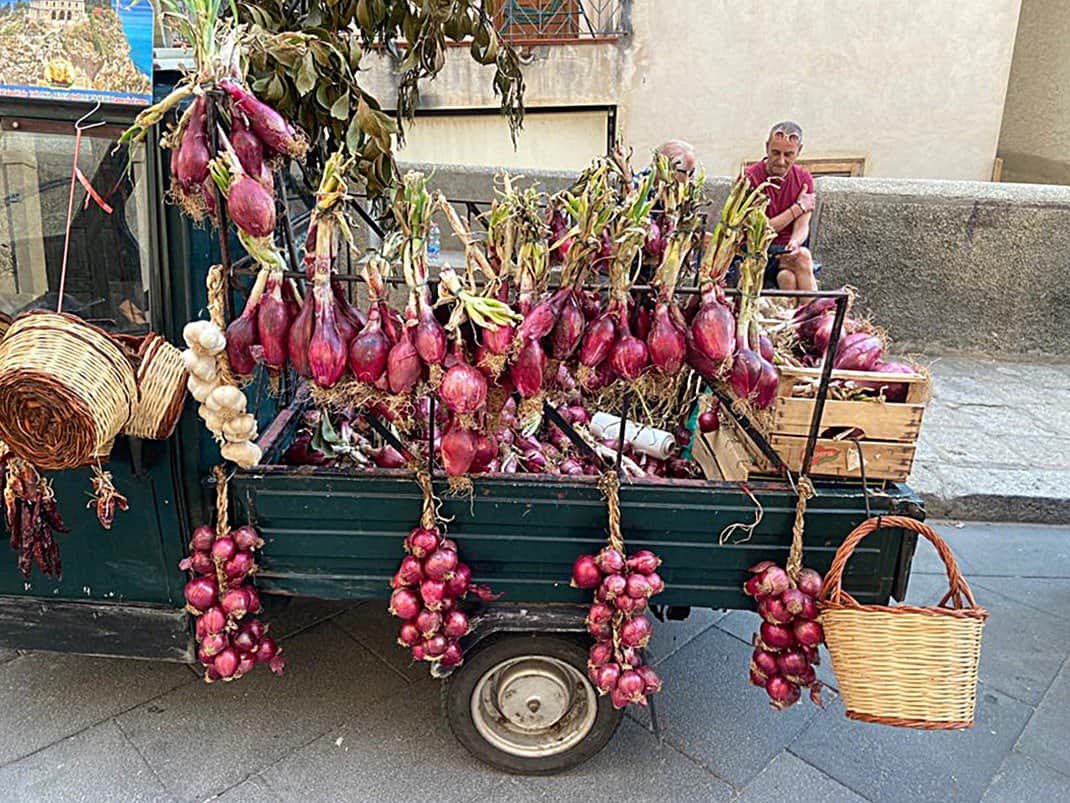
Food and wine
Calabrian cuisine is the Tex Mex of the Italian kitchen. It’s spicy, full flavored. Its headliner is a sausage called ‘nduja. It’s pork sausage made from various meat cuts, fat and Calabrian chili peppers. Originating from the village of Spilinga, 10 miles (18 kilometers) inland from Tropea, they’re mixed together and smoked. It’s served in slices as an antipasto and as a rich, fiery sauce in pasta. In fact, they even managed to convince local Burger King and McDonalds outlets to serve ‘nduja.
At La Lamia, on a cute enclosure on a back alley, I had fileja da ‘nduja e burrata, long, twisty pasta in ‘nduja sauce with mozzarella and cream. It’s the spiciest pasta you’ll ever have but the sauce is terrific to scoop up with fresh homemade bread.
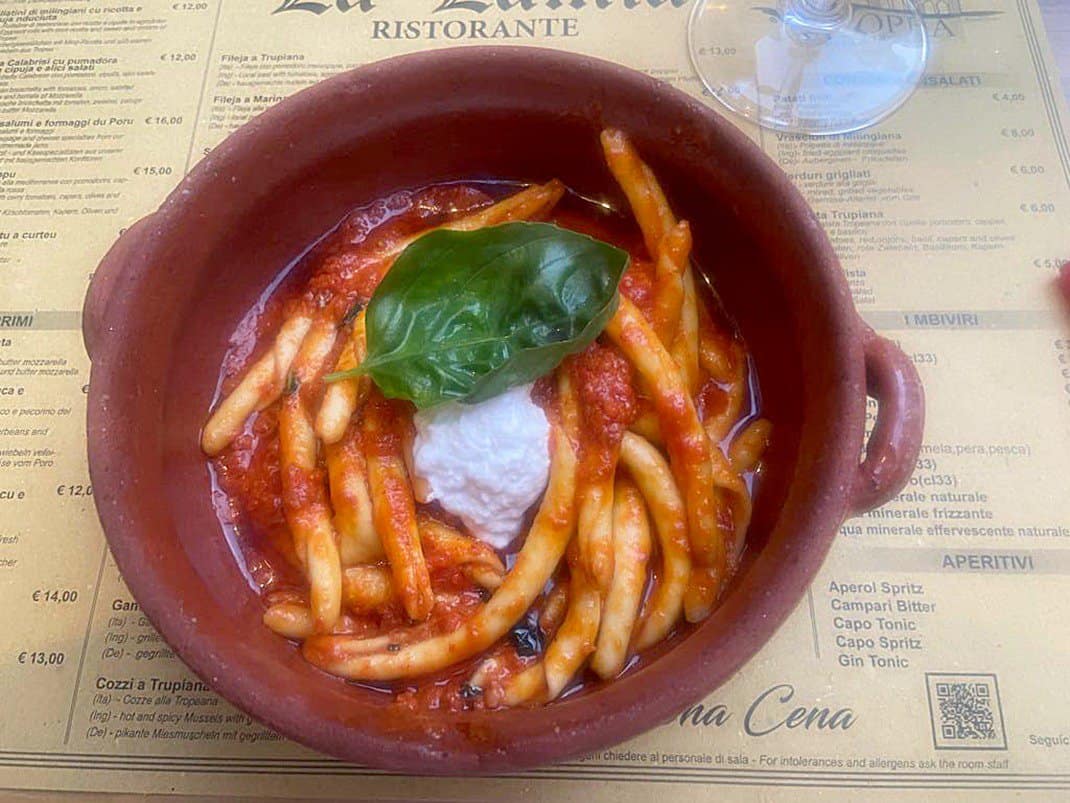
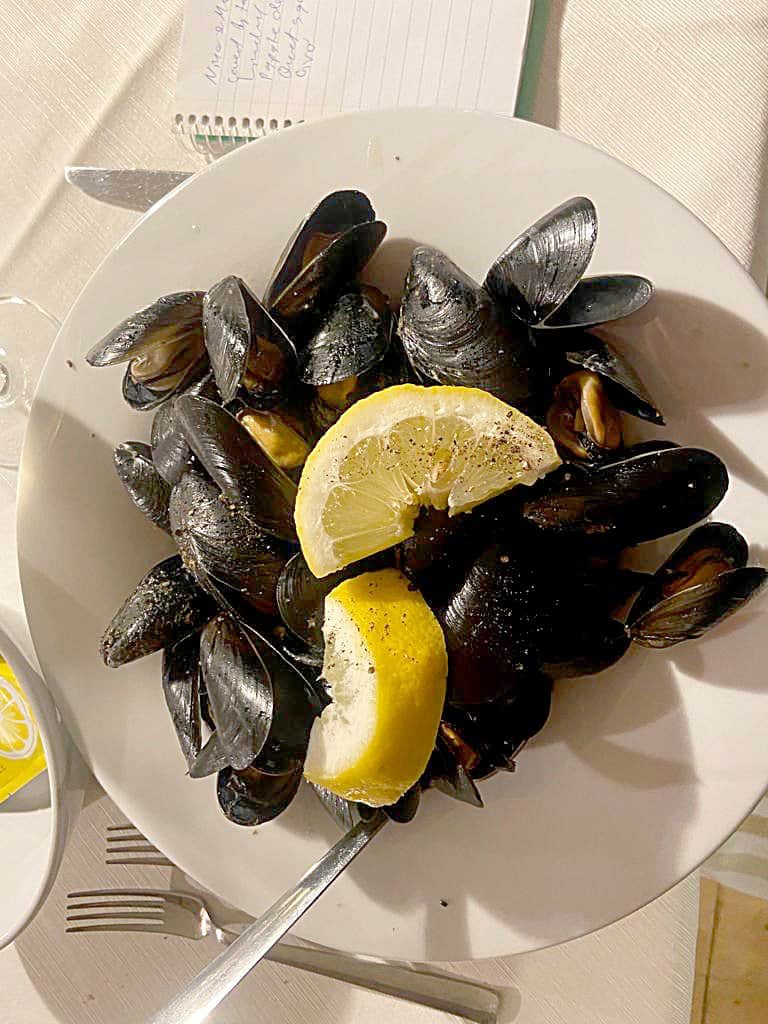
Calabria’s other trademark food is Cipolle Rosse di Tropea, Tropea Onions. I found these big, fat purple onions with long stems sold out of the backs of trucks all through the countryside and on pedestrian streets in Tropea. Known locally as Regina Rossa (Red Queen), they grow along the rich coastline near Tropea. They sell for only €2 a kilo and are served in shaved ribbons on my aperitivo tray. They are among the sweetest onions in the world and I ate them like olives every night.
You can’t leave Calabria without a Calabrian pizza. At La Pergola, which locals told me had the best pizza in town, I had La Faccia del Vecchio (The Old Face). It was covered in mozzarella, tomatoes, black olives and Tropea onions. It was light but oh, so tangy, unlike anything I’ve had before in Italy.

Besides the huge bucket of inexpensive mussels I had at Nino e Marcella and Osteria del Pescatore, probably the best meal I had was at Le Volpe e L’Uva. Oddly called The Foxes and the Grapes, it was tiny. It had only six tables inside and only a few outside in a building that dates back to 1500. With old love songs playing, I had the paccheri rosati allo spada pomodori e pinoli (wide tube pasta with swordfish in a tomato sauce and covered in pine nuts).
It went perfect with a glass of Ciro’ Classico which belies Calabria’s reputation as Italy’s wasteland of wine backwash. Only 4 percent of all Calabrian wine products are DOC (Designation of Controlled Origin), the label indicating the second-highest quality level behind DOCG.
About 95 percent of Calabrian wines are Gaglioppo red. It’s passable for a table wine but most Calabrian wines are shipped north to use in blends. The white Ciro’, however, is gaining some cred internationally and I bought a bottle in a wine store for only €12.
In next week’s blog I’ll explore Calabria’s rich countryside and another seaside gem overshadowed by Tropea. But Hercules had the right idea. Tropea is worthy of heroes.
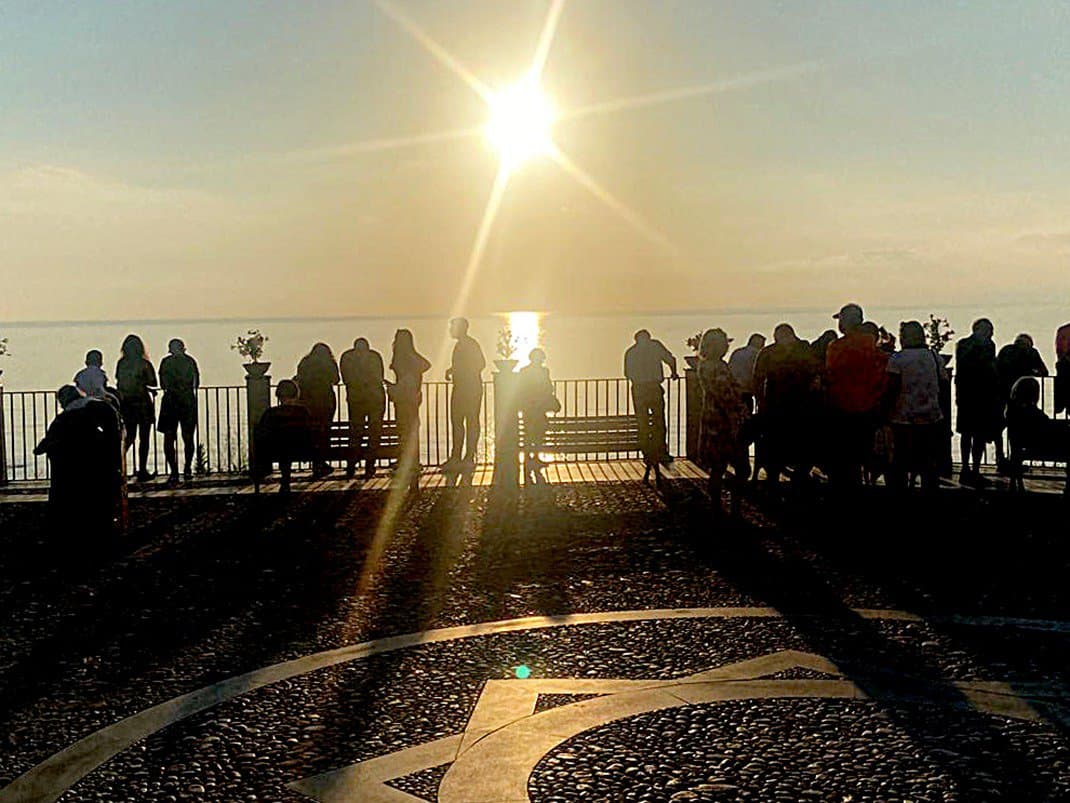
If you’re thinking of going …
How to get there: Trenitalia has numerous daily trains from Rome starting at €58 one way. The 5 1/2-7 hour trip connects at Lamezia Terme. ITA Airways has three direct flights a day from Rome-Fiumicino. The 70-minute flight starts at €167 round trip and goes to Lamezia Terme, 35 miles (60 kilometers) north of Tropea. Some hotels have free airport shuttles.
Where to stay: Hotel Tropis, Contrada Fontana Via Nuova, 39-09-63-607-162, www.tropis.it, info@tropis.it. A four-star wellness center a 10-minute downhill walk to Centro Storico. Features a swimming pool, spa and full buffet breakfast. I paid €95 a night in May. Price jumped to €153 in June.
Where to eat: Osteria Le Volpi e l’Uva, Via Garibaldi 11, 39-09-63-61900, https://le-volpi-e-luva.business.site/?utm_source=gmb&utm_medium=referral, 7-11 p.m. Many traditional Calabrian dishes from €8-18 in a cozy setting on a quiet street.
Nino e Marcella, Corso Vittorio Emanuele 53, 39-09-63-62196/39-329-25-92365, noon-midnight. Excellent seafood pasta dishes starting at €13.
When to go: Avoid July and August when it’s packed and temperatures are in mid-80s. My last week in May was 72 and sunny nearly every day with lows in mid-50s. In January lows are low 40s with highs in high 50s.
For more information: ProLoco Tropea, Piazza Ercole, 39-09-63-61475, https://www.prolocotropea.eu/, info@prolocotropea.eu, 10 a.m.-1 p.m., 6-9 p.m.


June 6, 2023 @ 10:20 am
We visited Tropea a few years ago. It really is lovely and I buy the onions whenever is see them.
You make me want to return.
June 8, 2023 @ 10:36 am
Thanks, Debra. I got addicted to those onions as well.
June 6, 2023 @ 1:54 pm
Great article (as always), thank you John. And fancy running into you in Tropea! Look forward to catching up in Rome. Regards, Giuseppe
June 6, 2023 @ 7:44 pm
Great article but perhaps a little harsh on Calabria, which has many other great places to visit in addition to Tropea, which is as you describe it, a jewel.
Try Scilla next!
June 8, 2023 @ 10:35 am
As I wrote, next week I’m writing about the rest of Calabria. I rented a car for two days and drove around the region. I LOVED Scilla! I want to return. It’ll post Tuesday.
June 7, 2023 @ 5:07 pm
Nice piece my ftiend… make s me want to rush there!
June 8, 2023 @ 10:55 am
Great post. Enjoyed it. Tropea is very beautiful. There are many beautiful villages in Calabria and less touristy. I can’t wait to return in september. Calabria has a bad rep for many things. Most of which is old info. I’m happy you liked Calabria. I have never seen a stray dog but I’m sure in the mountains they are there…. Sad.
June 8, 2023 @ 11:17 am
Thanks. Read my blog next Tuesday on the Calabrian countryside. I want to return to Scilla.
February 22, 2024 @ 8:16 pm
In 2004 we lived in Rome while my wife did a sabbatical at Instituto de Superiore de Sanita. We fell in love with Rome and have returned – except for COVID – every year for a month in the spring and a month in on fall. We have been all over Italy – mostly on bicycle – since 2004. Last fall we planned a trip to Calabria since we have never been there. During that time we both had bad colds and had to postpone our trip to Calabria. I want to thank you for your article on Calabria since we now have more information about where to go. We will be in Rome from April 10 to May 10th this year and will go to Calabria at some point in that time period.
(We met the Blooms in 2004 while hashing. They kept our bikes on the balcony of their apartment while we were home in DC. I found their condo in Washington DC that they bought.)
February 27, 2024 @ 9:32 am
Thanks, Nolan. Have a great time in Calabria. If you pass through Rome, look us up.